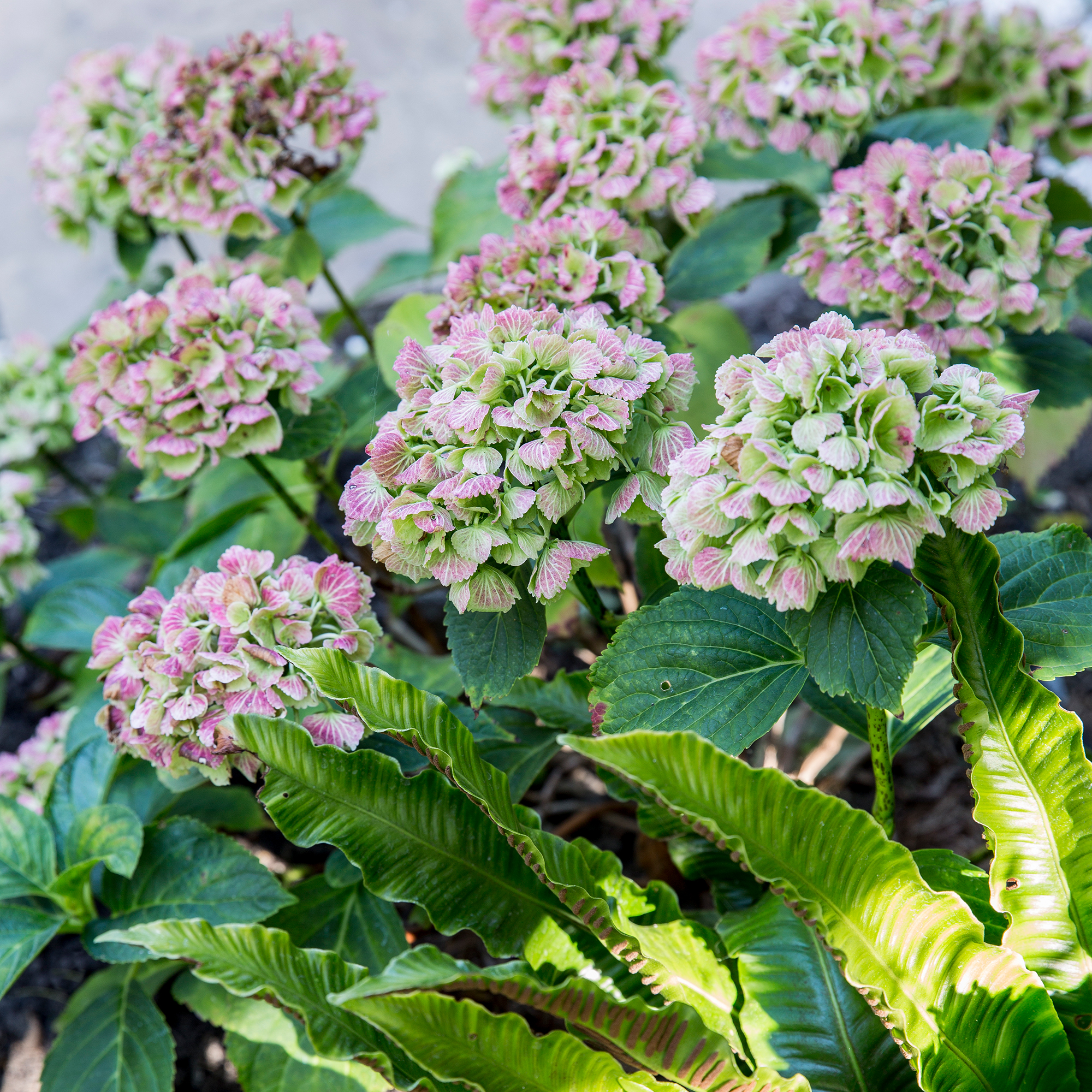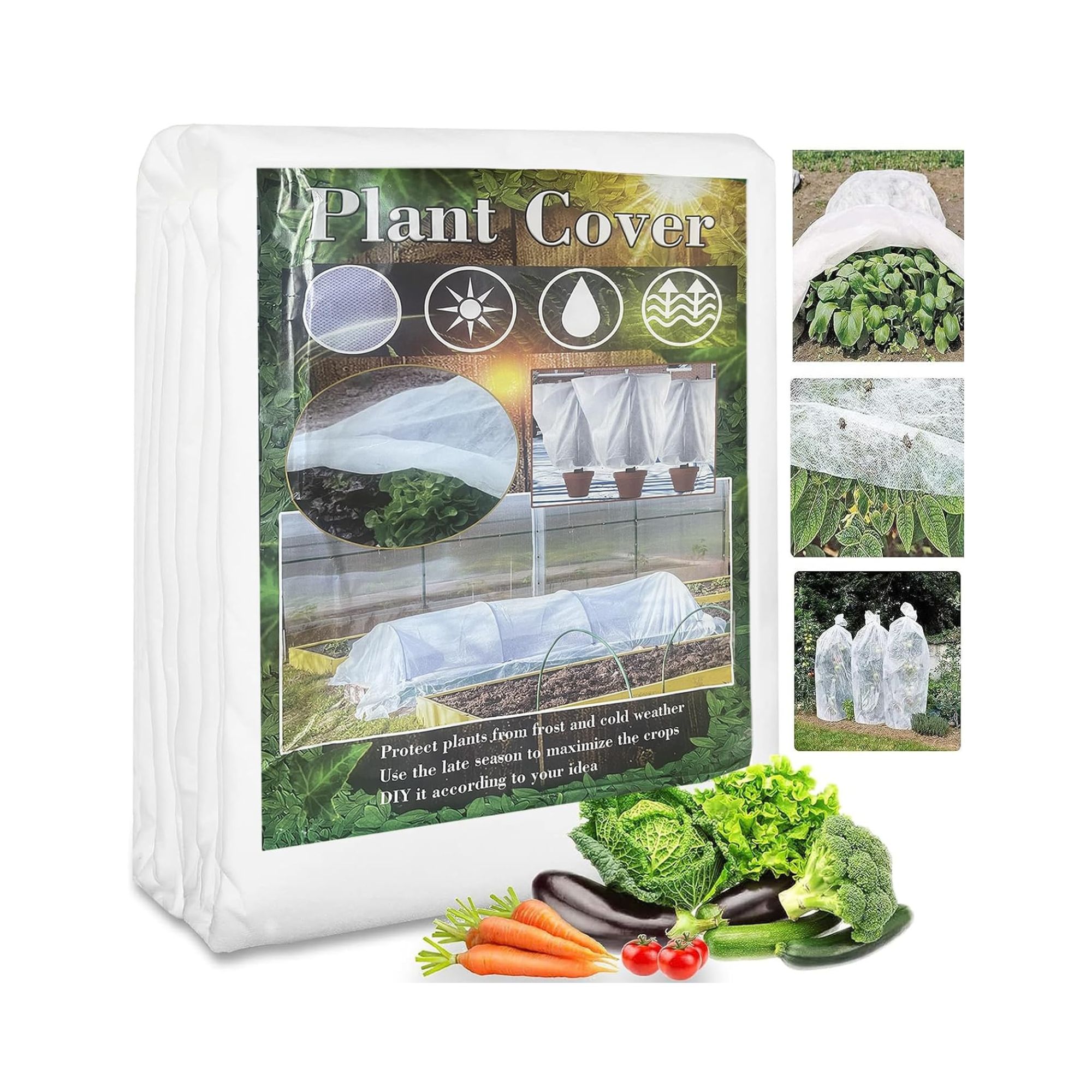Why is my hydrangea not flowering? 6 possible reasons why and how to fix it, according to experts
Top tips to bring back their bloom


Right now, social media is filled with green-fingered gardeners showing off their blooming hydrangeas and cutting off giant flowerheads for breathtaking indoor displays. But if your hydrangea plant is falling short, you might wonder: Why is my hydrangea not flowering?
Of course, you probably don’t need us to tell you just how popular hydrangeas are. They’ve found their way into garden ideas across the country, and they’re even known to boost the value of your property. But while hydrangea foliage can be beautiful, it’s the flowers that really shine… when they actually bloom, anyway.
Fortunately (and unfortunately), there are many possible reasons why your hydrangea isn’t flowering, so we’ve consulted with garden experts to provide you with all of the information you need to know about these issues and how to fix them. So, your hydrangea should be blooming again in no time.
1. It’s been pruned incorrectly
Unfortunately, many hydrangea pruning mistakes can affect both the bloom and the overall health of your plant. And many of these mistakes revolve around timing.
It’s crucial to know when to prune hydrangeas and when it’s too late to cut back hydrangeas - but first, you need to know what type of hydrangea you’re working with.
John Clifford, garden expert at Gardenstone, explains, ‘Getting this right is essential as you could prune wrong and prevent your plant from flowering at all. Some examples of how and when to prune certain types of hydrangea include:
- Mophead and lacecap hydrangeas: These bloom on old wood. If you prune these in spring or late winter, you might just be cutting off the flower buds. Always prune right after they flower, in summer.
- Panicle hydrangeas and smooth hydrangeas: These bloom on new wood, so they should be pruned in late winter or early spring.
- Oakleaf hydrangeas: These also bloom on old wood and should be pruned after they flower.’
So, if you pruned your hydrangea incorrectly last year, you may be paying the price with a hydrangea not flowering this year.
Sign up to our newsletter for style inspiration, real homes, project and garden advice and shopping know-how
Solution: Leave your hydrangea alone! Although there’s no guarantee that your hydrangea will be able to bounce back from incorrect pruning, it’s a good idea to leave your hydrangea to its own devices throughout what would be its flowering period.
Then, avoid pruning this year. Leave it to recuperate, and keep your fingers crossed that it will flower next year.

John Clifford is a director of Gardenstone, a leading garden landscaping retailer based in the UK. With over 30 years in the gardening industry and continual work alongside The National Trust, John has amassed an extensive range of gardening and planting knowledge. Alongside his younger son, John has built a strong reputation for Gardenstone as a trusted source for both high-quality garden products and expert gardening advice.

2. It doesn’t have the right nutrients
With big, impressive blooms to grow, it should come as no surprise to learn that hydrangeas require a lot of nutrients to flower successfully. So, one of the reasons why your hydrangea isn’t flowering is because it just doesn’t have enough of a boost.
This is particularly common in hydrangeas grown in pots and garden borders with poor-quality soil and normally results in a hydrangea with luscious foliage but no flowers.
However, it’s also important to note that hydrangeas can also suffer from over-fertilising - especially if you use a high-nitrogen fertiliser or a lawn fertiliser that seeps into the soil by your hydrangeas.
Solution: Your first step is to test your soil for nutrient deficiencies and determine what you’re working with. A proper test can help you understand what nutrients you have and which ones you lack and understand why your hydrangea isn’t flowering.
In most cases, though, a specific hydrangea fertiliser should do the trick. John echoes this, saying, ‘Use a balanced, slow-release fertiliser. A high-nitrogen fertiliser can encourage leaf growth instead of flowers, so I would avoid this.’
3. It’s in the wrong location
Hydrangeas are fickle plants and like their conditions to be just right. Because of this, you need to ensure that you’re giving your hydrangea the right amount of sunlight to keep it blooming year after year. If not, you may also find that your hydrangeas turn brown.
Typically, this involves around 4-6 hours of direct sunlight and then 4-6 hours of indirect sunlight daily, which means your hydrangea probably won’t flower in a north-facing garden. It’s important to note that this isn’t the case with all hydrangeas.
Morris Hankinson, director of Hopes Grove Nurseries, explains, 'Hydrangeas are known for growing in part shady conditions, but most won’t grow so well in deep shade.'
He adds, 'Ideally morning sun with dappled shade throughout the day will really help hydrangeas to thrive and buds to form for full flowering. Check the variety of hydrangea you are growing because oakleaf (Hydrangea quercifolia) will tolerate the shade better than others.'
'Equally, if you have a hydrangea in full, direct sunlight, this can cause problems as well. You might notice scorched leaves with browning or yellow foliage and wilting flowers. Usually a sign of too much sun or not enough water,' he finishes.
With this in mind, it’s best to research your specific hydrangea variety and find out how much direct and indirect sunlight it needs.
Solution: If you know that your hydrangea plant is getting too much sun, move it to a slightly shaded garden area. Of course, this should be easy if you’ve planted your hydrangea in a pot but it will be a little more difficult if it’s planted in-ground. Just make sure you know when and how to move hydrangeas, so you don’t kill it in the process.
If your hydrangea plant is getting too little sun, move it to a sunnier location.

Morris Hankinson is the founder and managing director of Hopes Grove Nurseries Ltd, the UK’s only specialist grower-retailer of hedging plants. He established the thriving business in 1992, shortly after graduating with a Commercial Horticulture Degree from Writtle College, Essex.

4. It’s suffered frost damage
The ever-changing UK weather can wreak havoc on our gardens, and our plants often suffer as a result - especially if there’s a late frost. In extreme cases, this can even prevent your hydrangea from flowering.
John explains, ‘If we get frost in late spring, then there's a chance that your hydrangea could experience frost damage. This can kill the flower buds on hydrangeas that bloom on old wood.’
Yes, even if your hydrangea was gearing itself up to bloom this year, the late frost could have scuppered that plan and left it with frost damage instead. This is something that your hydrangea may bounce back from, but in some cases, it could result in the death of your plant.
Solution: If your hydrangea survives the frost damage, it’s best to be prepared for the next cold snap and protect your plants from frost. Luckily, there are a couple of ways to do that.
One of the easiest ways to protect your hydrangea from any cold snaps is to use mulch. By adding a layer of mulch around your hydrangeas, you can protect the roots and the base of the plant from the cold weather.
If you also want to protect the leaves of your hydrangea plant, it’s also a good idea to protect it with horticultural fleece or a plant cover. Then, you can just wrap them up warm during the colder months.
5. It’s just too young
It can be worrying when your hydrangea isn’t flowering, but if you planted it between 1 to 5 years ago, you shouldn’t be too concerned. That’s because hydrangeas take a few years to mature and like to fully establish themselves in their location before showing off their blooms.
In rare cases, hydrangeas can bloom a year after planting - but this doesn’t happen very often. More often than not, you’ll see your first flush of flowers a few years after planting.
Solution: Be patient! There’s no point trying to speed up the growth of your hydrangea, as this could do more harm than good. So, just wait until your hydrangea plant matures to enjoy its famous blooms.

6. It’s been damaged by animals
While a wildlife garden can increase the value of your property, some animals can also be a nuisance - especially if you live in more rural areas. That’s because deer and other foraging animals love the taste of hydrangeas and will happily munch them all.
In fact, they specifically love the taste of hydrangeas just before new growth is set to bloom, meaning they’ll eat new buds and desecrate the foliage all year round. And the more it's eaten, the more it's damaged - making it less likely to flower.
Solution: Improving your garden fences is often the best way to stop animals from damaging your hydrangea, as this will ultimately stop them from coming into your garden in the first place. However, this isn’t always possible due to funds or planning permission rules.
Instead, plant heavily scented plants such as lavender and marigolds around your hydrangea plant. Deer and rabbits hate these strong aromas, so they’ll actively avoid going near them, which means that they’ll also steer clear of your hydrangea.
FAQs
What time of year do hydrangeas flower?
Most hydrangeas flower from mid to late summer, but some varieties will continue to bloom well into the autumn. It all depends on the type of hydrangea you have.
It’s also important to note that it’s very common for hydrangeas not to flower. This may be because it’s a relatively young plant, or could be a sign of something much more sinister that needs attention.
So, it’s best to keep an eye on your hydrangea before and during the blooming season to ensure you’re giving it the right care and attention.
Will vinegar help hydrangeas bloom?
Vinegar won’t help your hydrangea bloom, but it will help your hydrangea flowers change colour. In fact, adding vinegar to your soil will increase the acidity of your soil, which will ultimately turn your hydrangea flowers blue.
It’s best to do this will apple cider vinegar and dilute it in a watering can full of water, but white vinegar can also work. Just make sure you don’t use too much, as white vinegar is extremely acidic.
So, if your hydrangea isn’t flowering, it may just need some extra TLC.

Lauren Bradbury has been the Content Editor for the House Manual section since January 2025 but worked with the team as a freelancer for a year and a half before that. She graduated with a Bachelor’s degree in English and Creative Writing from the University of Chichester in 2016. Then, she dipped her toe into the world of content writing, primarily focusing on home content. After years of agency work, she decided to take the plunge and become a full-time freelancer for online publications, including Real Homes and Ideal Home, before taking on this permanent role. Now, she spends her days searching for the best decluttering and cleaning hacks and creating handy how-to guides for homeowners and renters alike, as well as testing vacuums as part of her role as the Ideal Home Certified Expert in Training on Vacuums, having spent over 110 hours testing different vacuum models to date!


